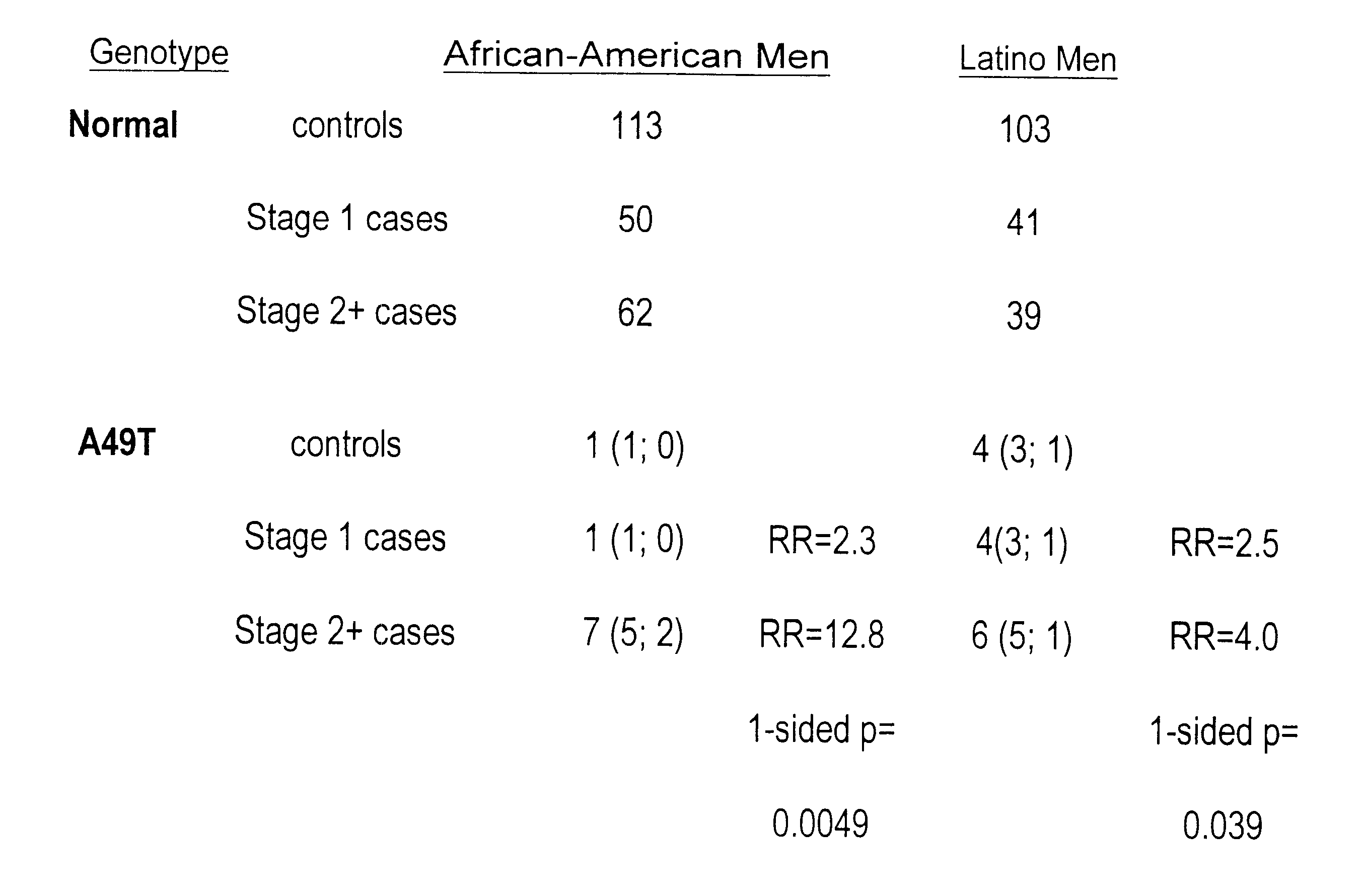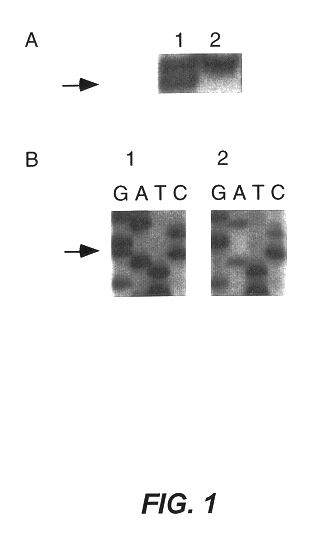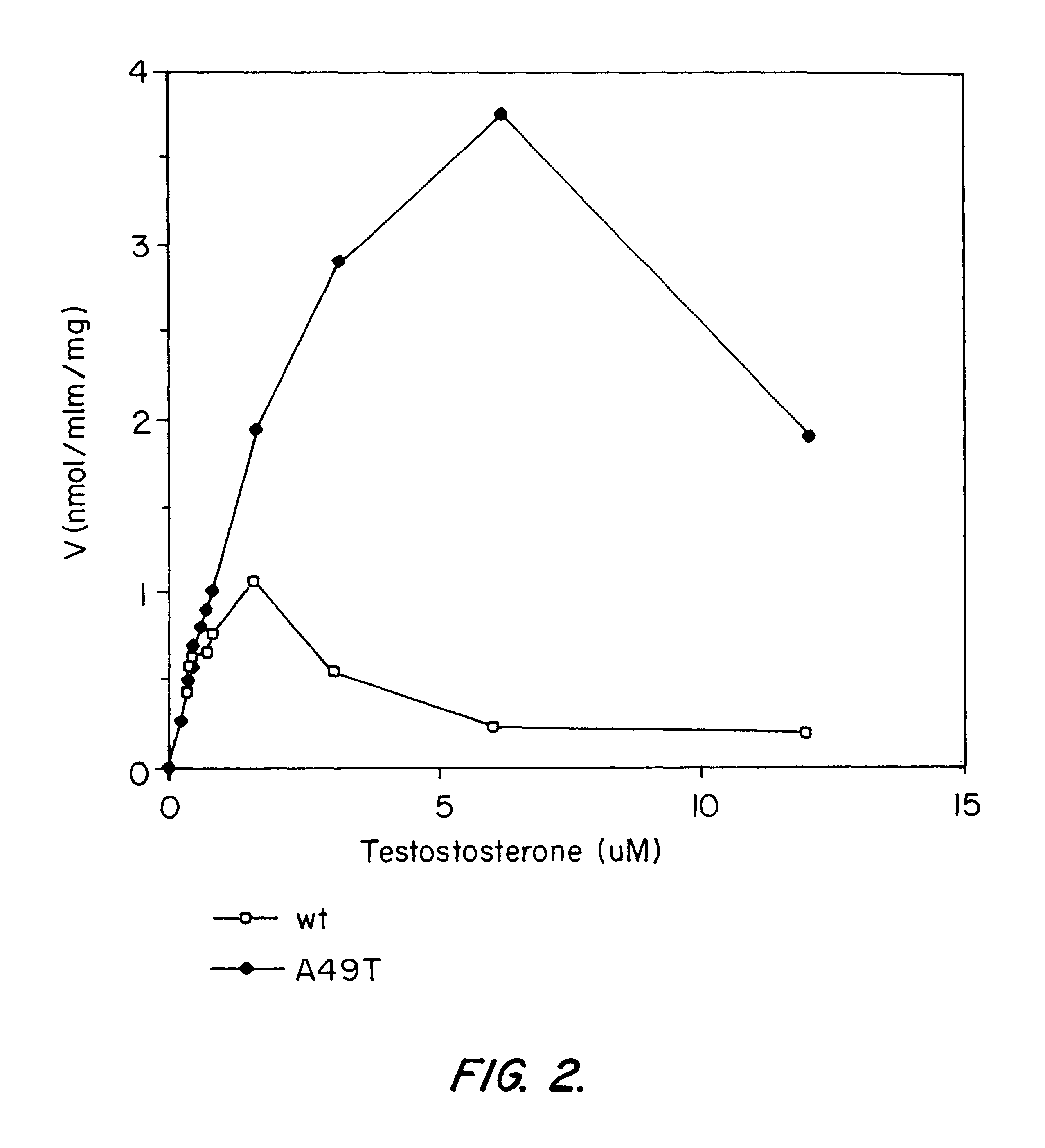Androgen-metabolic gene mutations and prostate cancer risk
a technology of androgen metabolism and mutations, applied in biochemistry apparatus and processes, fermentation, organic chemistry, etc., can solve the problems of little known regarding the genetic predisposition to prostate cancer, substantial decrease in the prostatic secretion of the normal gland, and substantial increase in the cell death of normal and transformed prostatic cells
- Summary
- Abstract
- Description
- Claims
- Application Information
AI Technical Summary
Problems solved by technology
Method used
Image
Examples
example 4
5.8.5. Example 4
HSD3B2 Alleles
FIG. 8 illustrates the allele frequencies of all 25 alleles thus far identified for the HSD3B2 gene in 312 control subjects of African-American, Asian, and European heritage. The 289 bp allele was the most common allele in all three population groups examined (FIG. 8). This marker was significantly more common among Euro-Americans (allele frequency=51.6%) than among African-Americans (allele frequency=33.6%; P=0.00003) or among Asians (allele frequency=36.7%; P=0.005). The second most common allele in all populations was 291 bp in size but its frequency differed dramatically between African (allele frequency=25.4%) and Euro-Americans (allele frequency=10.5%; P=0.000009) (FIG. 8). The same allele was intermediate in frequency among Asians (allele frequency=15.0%; P=0.015 vs. African-Americans). The 275 bp allele has thus far been found only in African-American men with a frequency of 5.5% (P=0.0064 vs. Euro-Americans; P=0.0041 vs. Asians; FIG. 8). The 29...
PUM
| Property | Measurement | Unit |
|---|---|---|
| 17 α-hydroxylase | aaaaa | aaaaa |
| enzyme activity | aaaaa | aaaaa |
| nucleic acid sequences | aaaaa | aaaaa |
Abstract
Description
Claims
Application Information
 Login to View More
Login to View More - R&D
- Intellectual Property
- Life Sciences
- Materials
- Tech Scout
- Unparalleled Data Quality
- Higher Quality Content
- 60% Fewer Hallucinations
Browse by: Latest US Patents, China's latest patents, Technical Efficacy Thesaurus, Application Domain, Technology Topic, Popular Technical Reports.
© 2025 PatSnap. All rights reserved.Legal|Privacy policy|Modern Slavery Act Transparency Statement|Sitemap|About US| Contact US: help@patsnap.com



